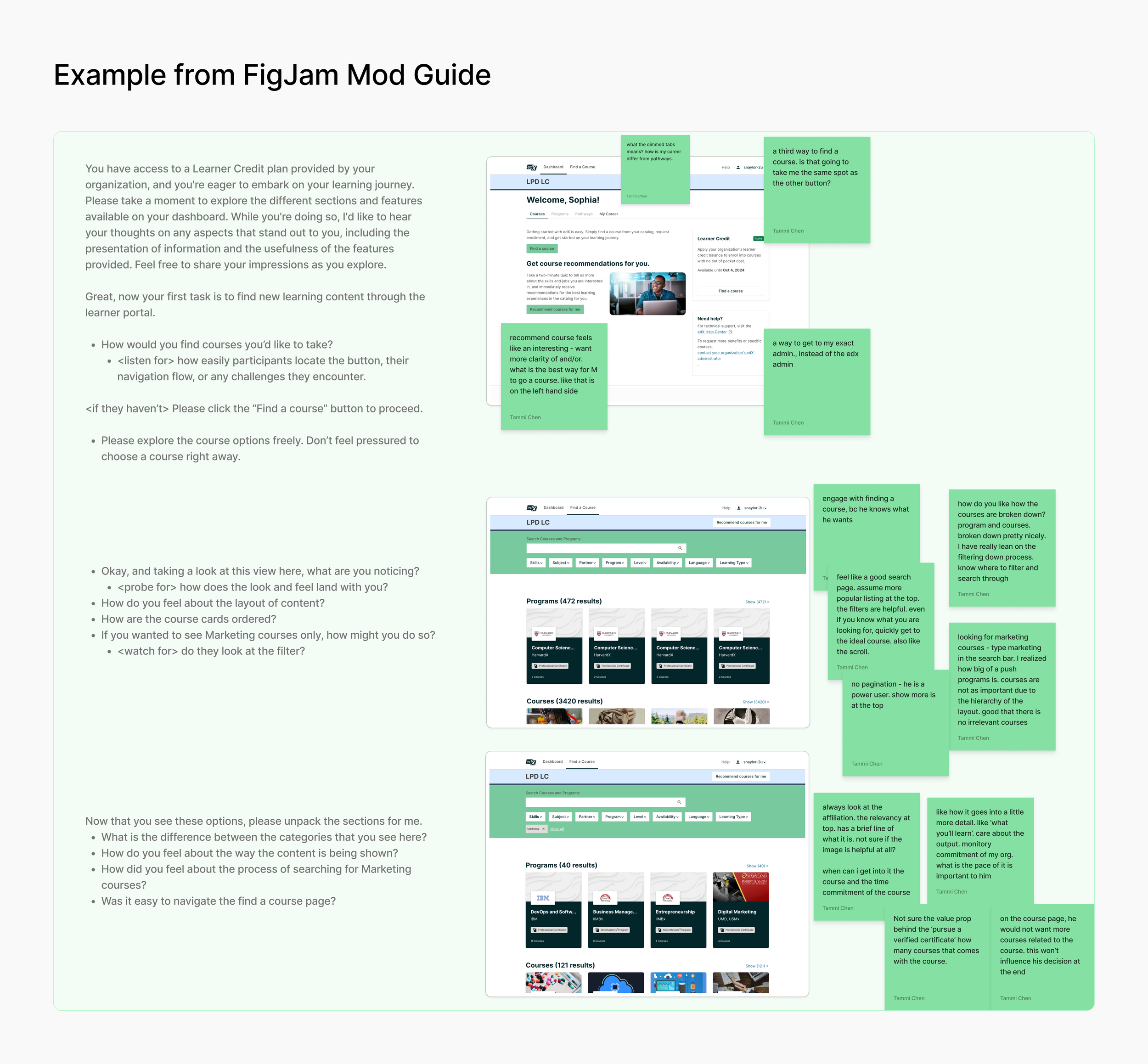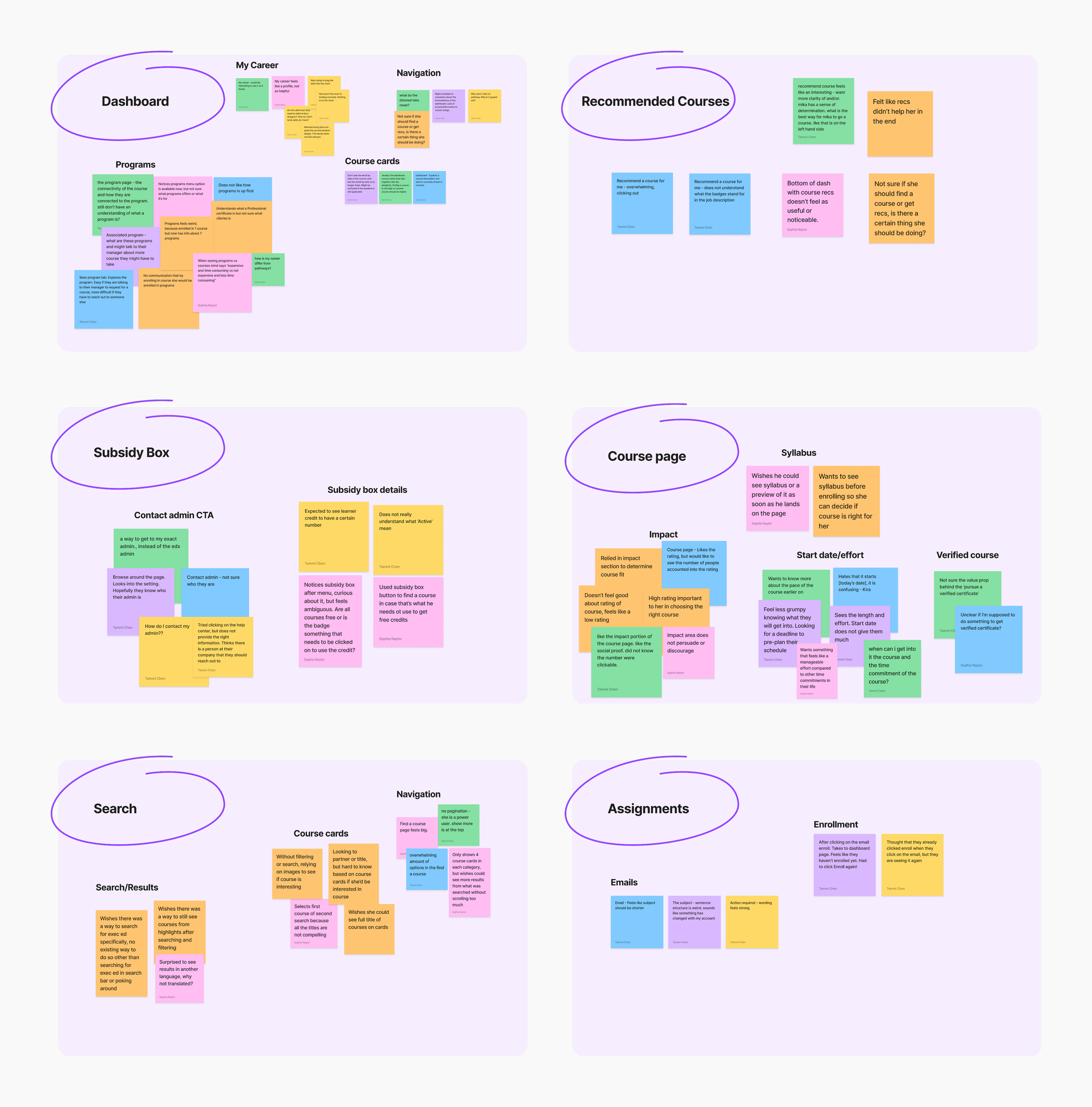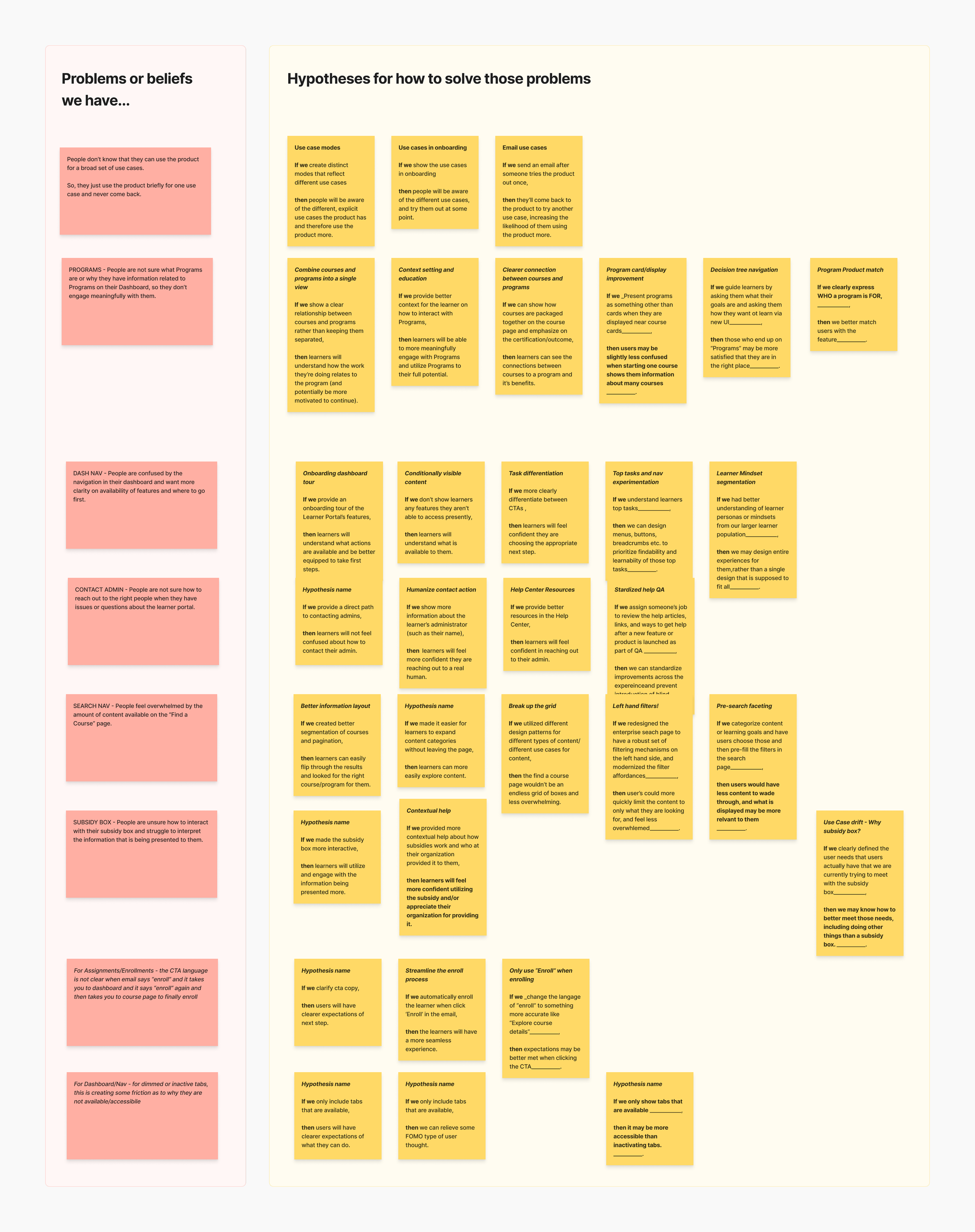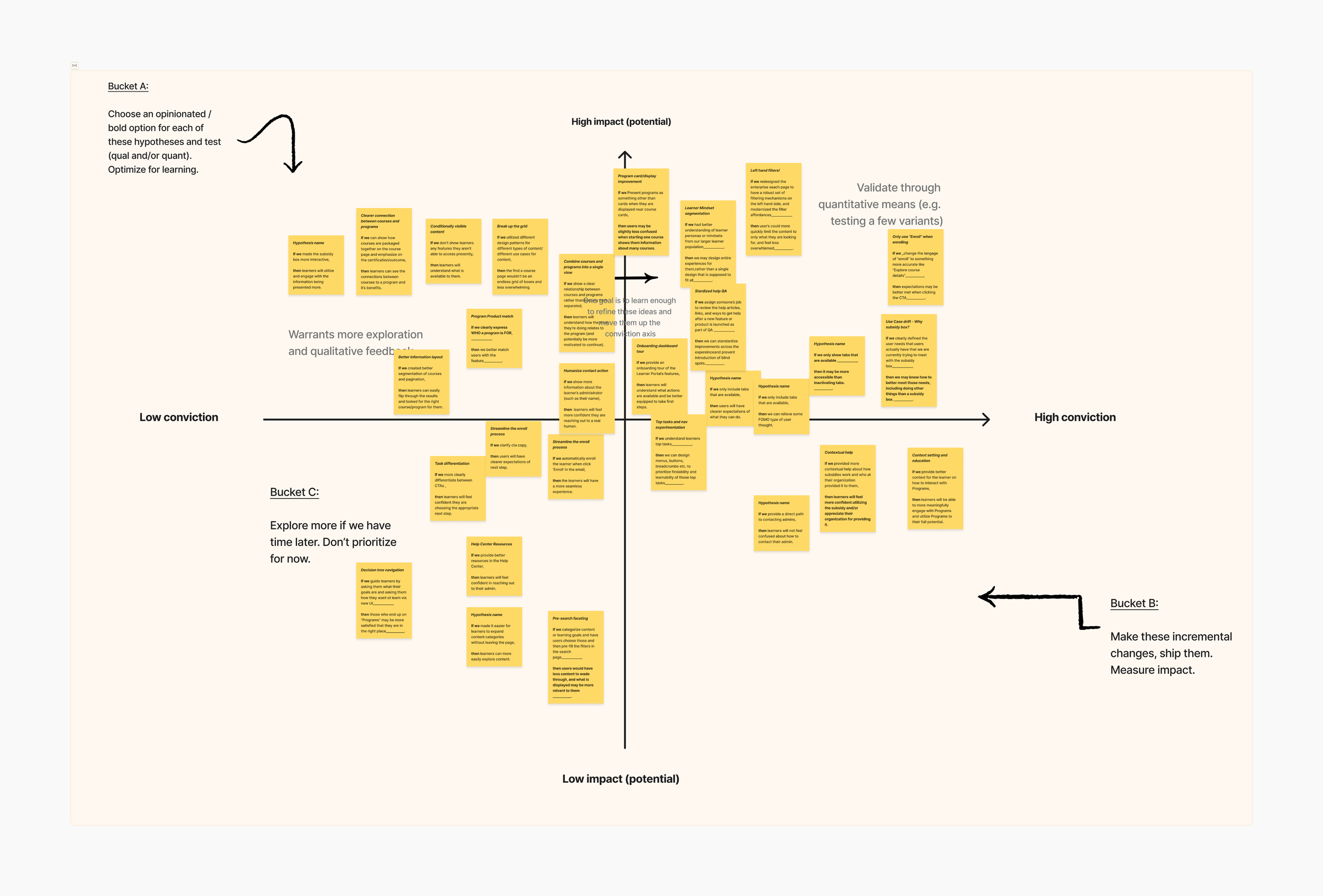
Introduction: Auditing the edX for Business Learner Portal to Influence the 2025 Product Roadmap
edX for Business is committed to providing impactful online learning experiences for organizations worldwide. As part of the product team, I led a research project to address a key challenge: how might we identify and fix the pain points learners experience within the Learner Portal, ensuring a smoother and more intuitive user experience?
In this case study, I’ll walk you through how I conducted a comprehensive usability audit of the Learner Portal, analyzing user struggles through usability testing. This research directly influenced the 2025 product roadmap by pinpointing critical areas for improvement, ultimately driving a better learning experience for all users.
The Problem
Business: High-value customers consistently provided feedback that their learners were struggling to navigate the Learner Portal, leading to frustration and dissatisfaction. This was a barrier to driving renewals, and the product team aimed to improve the learner experience as a means to increase retention.
Customer: Enterprise administrators want their learners to navigate the portal effortlessly so they can maximize the value of their organization's investment in enterprise learning.
The Goal
Identify pain points in the Learner Portal through usability testing to inform the product roadmap, ultimately enhancing the learner experience and improving customer retention.
The Approach
To tackle this problem, I led a research project focused on auditing the Learner Portal through usability testing. The goal was to uncover where users were encountering issues and identify opportunities for improvement. Given the scale and importance of this product, this research was critical for shaping the 2025 product roadmap.
Steps taken:
Stakeholder Research: I began by reviewing customer feedback, which indicated recurring navigation issues. I collaborated with Customer Success to identify specific pain points reported by high-value clients. This helped inform the questions we would ask during our usability tests.
Usability Testing: With the help of my team, I conducted 6 usability tests across a range of learners to observe their interactions with the portal. These tests were designed to highlight common navigation struggles and to uncover tasks that were taking too long or causing confusion.
The Insights
I analyzed the usability test results to identify trends. I looked for tasks that were consistently difficult for learners and pinpointed areas that caused the most frustration. Several key pain points surfaced, including:
Program Confusion: 4 out of 6 participants struggled to understand what "Programs" were or how they became enrolled in them, leading to confusion about the purpose and structure of the feature.
Navigation Confusion: 5 out of 6 participants were confused by the main navigation on their dashboard, particularly with the presence of certain navigation items that were visible but disabled, creating uncertainty about their function.
Overwhelming Course Discovery: Several participants expressed feeling overwhelmed by the "Find a Course" page, struggling to navigate and locate relevant courses efficiently.
Enrollment Frustration: Multiple participants expressed frustration when attempting to enroll in their assigned course, particularly due to having to click the "Enroll" button multiple times during the process.
Course Recommendation Disinterest: 5 out of 6 participants were either uninterested or overwhelmed by the "Recommend a Course" option, showing a lack of engagement with this feature.
Prioritization
To prioritize the insights gathered from the research, I organized a workshop with the Enterprise UX and Product teams. The goal was to evaluate which insights held the most value for our customers. During the session, I presented the categories of insights (as shown above) and had each attendee cast 4 votes on the categories they believed were most impactful.
Once we identified the top categories based on the votes, we used them to craft hypotheses about the core problems.
We then evaluated these hypotheses using an Impact/Conviction matrix. In this matrix, attendees assessed each hypothesis by considering its potential impact on the product and their conviction in its alignment with the focus areas that would drive the most value for our customers.
The Impact
The results from this usability audit were instrumental in shaping the product roadmap for 2025. The research identified specific areas that needed immediate attention, which helped prioritize updates to the portal. Some of the key outcomes included:
Improved Navigation: Plans were made to reorganize the interface, simplify the menu structure, and improve content discovery for learners.
Enhanced Progress Tracking: A more intuitive and visually clear progress tracker was added to help learners better understand where they were in their courses and what they needed to do next.
Refined Search Function: Updates to the search algorithm and result filtering were prioritized to make content discovery faster and more relevant.
The insights gathered helped ensure that the product team's efforts were focused on the most impactful areas, ultimately improving the learner experience and driving better engagement for high-value customers.




